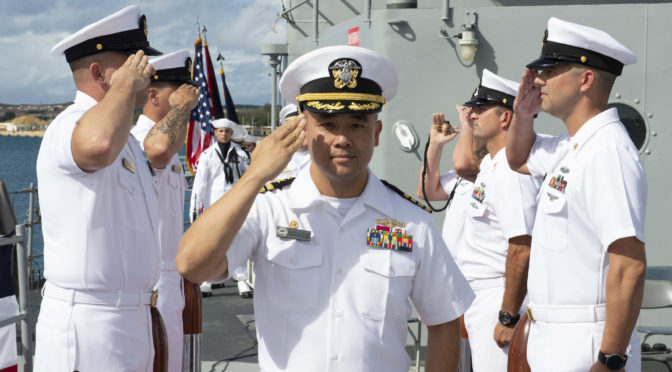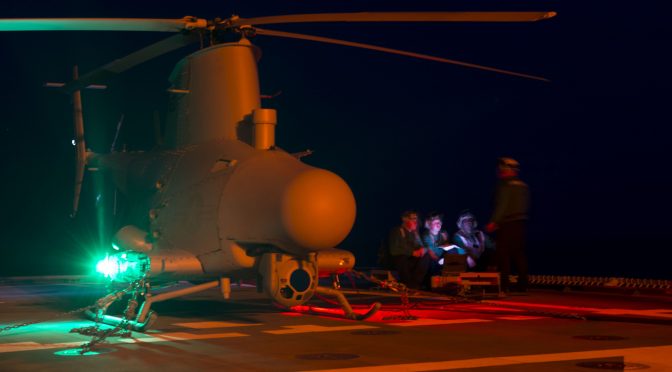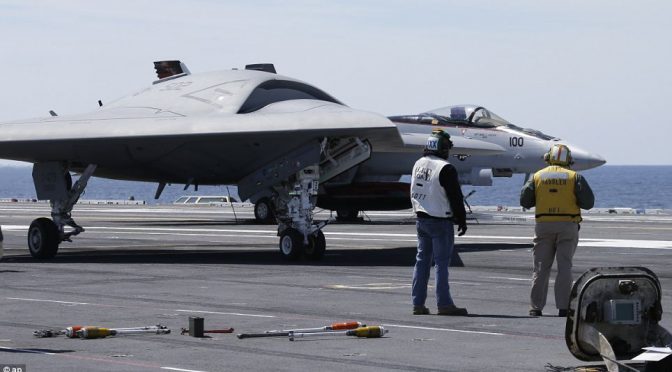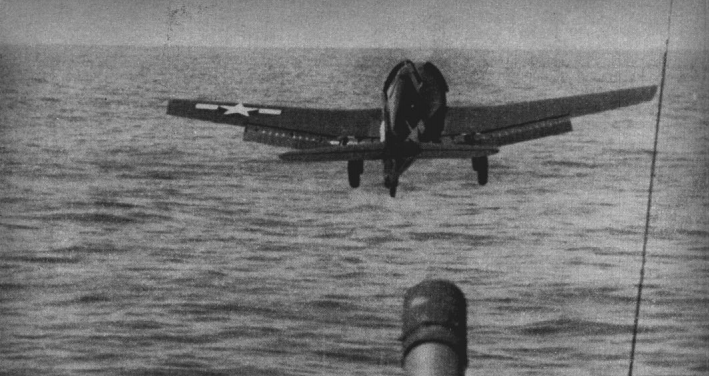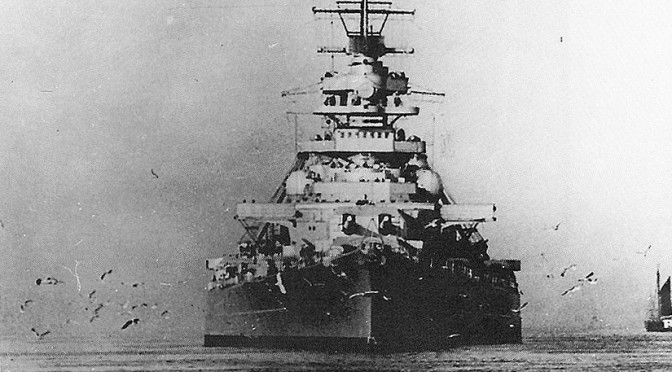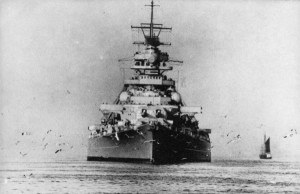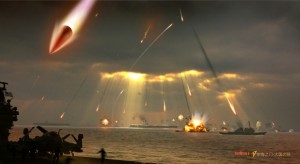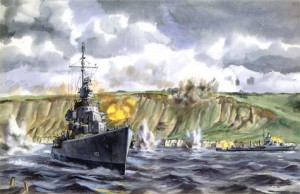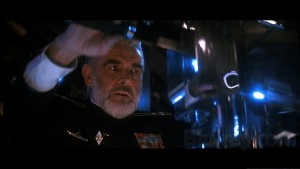By Capt. Bill Shafley
Commander’s intent is the cornerstone of mission command.1 Yet, it remains a nebulous form of communication. In naval operations, commander’s intent is infrequently understandable, let alone actionable. It is filled with jargoned terms like purpose, method, key tasks, end state, critical information requirements (CCIRs), and acceptable level of risk (ALR). While these terms of reference create nicely formatted PowerPoint charts, the resultant commander’s intent is an exchange of sterile terms that inhibit rather than enable mission command. The processes that create commander’s intent are staff-centric. The thinking surrounding mission command is commander-centric.2 The resulting mismatch prevents shared awareness, slows disciplined initiative, and challenges a commander’s ability to take prudent risk.3
The Critical Role of Commander’s Intent
Not only can we get better at writing intent, we must do so in a manner that enables our up-echelon commanders to take advantage of the creativity, ingenuity, and style of their subordinate commanders. First, commanders must take back the responsibility for thinking about and crafting their own intent. The Naval Planning Process (NPP) has whittled away the commander’s role in the process of analyzing a mission, developing courses of action, and creating a written order, and the commander’s role must be restored.4 Second, commanders must personalize their intent and ensure it reflects their vision of the unfolding operation, not the staff’s version of same. Successful intent statements are plain language attempts at a commander’s visualization of the battle. It lays the foundation and provides the framework for all that unfolds.5 Finally, commanders need to be developed for effective leadership in an environment where mission command is the norm. In an era where communication is ubiquitous and spans of control are ever-growing, the information demands of higher headquarters grow as well. This is making it more and more challenging to define commander’s business.
Formalized opportunities for this type of development need to be programmed into the career path of senior leaders. Improving self-awareness, deepening critical thinking skills, and providing the opportunity to reflect upon the responsibilities of and best practices for executive decision making are a must.
Essential Element of Mission Command
In a white paper issued by Chairman of the Joint Chiefs of Staff General Martin Dempsey, “The commander is the central figure in Mission Command.”6 Staffs have neither the authority nor the accountability to execute operations. From receipt of the mission to orders production, the commander is the pivot point in command and control.7 NPP is all about planning, while commander’s intent is about decision making.8
As Milan Vego stated, “There is possibly no greater responsibility for a commander but to make decisions on the employment of…combat forces.”9 Staffs need to get out of the commander’s intent business. The planning process gives them ample opportunity to inject their expertise into mission analysis and course of action (COA) development. The by-product of a staff generated commander’s intent is that it feeds off the data collected, analyzed, and presented to the commander. It flows from the steps of mission analysis and COA development and thereby gets structured in terms of tasks, end state, and risk. Even the most involved commander will find it challenging to weave intent into this staff process. A personal example brings these observations to the forefront.
During strike group work-ups, the destroyer squadron (DESRON) staff worked diligently in developing its planning bona-fides. We committed to five-paragraph orders that included commander’s intent, CCIRs, and ALR as a format to communicate our mission tasking with assigned units. With the notion that these orders to subordinate units would give them ample understanding of what needed to occur, the staff needed to make follow-on decisions and decide how much risk we as a team were willing to accept to accomplish the assigned mission.
As the commander, I spent time with my planners throughout the planning process in an attempt to ensure the strike group’s mission and how it fed the fleet end state was adequately captured. Our planners developed a Situation, Mission, Enemy Situation, Admin, Command and Signal (SMEAC) five-paragraph order format. Over the course of work-ups, we refined the manner in which we captured the friendly and enemy situations. We labored over purpose and method. We added critical information requirements and discussed risk. Yet, after each order, reflection, and modification of our format, I still found myself summarizing that data in plain language from commander to commander to ensure we could see the forest through the trees.
In hindsight, I have concluded that the order is for watchstanders and subordinate planners, the intent is for commanders. It was clear to me in practice that my planners could only get me so far. I needed to add clarity to their words and do it a manner that made sense to my subordinate commanders. Without that additional clarity, the shared awareness, disciplined initiative, and prudent risk-taking I was trying to achieve would remain opaque.
Commander’s Personal Viewpoint
As Gen. Dempsey described it, “In mission command, the commander must understand the problem, envision the end state, and visualize the nature and design of the operation.”10 Intent should reflect a commander’s personal and deep understanding of the mission. It should describe how subordinate units and warfighting functions come together to bring about a desired effect against an enemy force. It is, in its purest form, visualization. It communicates in clear terms for subordinate commanders how the boundaries and conditions around which a battle ahead should unfold. Intent communicates roles, success, failure, and pace. It describes to subordinate commanders and their staffs what is required to make decisions and who can make them and even how to act in the absence of further orders. Milan Vego has offered rules of thumb in drafting intent, including writing it in the first person, ensure it reflects the personality of the commander, keep it short and memorable, and write clearly and precisely.11 Intent crafted in this manner is akin to scaffolding around a building. It is simple pieces simply put together.
Reflecting again on recent personal experience, workups provide numerous opportunities for strike group and warfare commanders to use intent as a reflection of this deeper understanding of the mission. Multi-warfare, multi-phased operations that consume a common set of resources create opportunities for friction, early culmination, and priorities. Commanders know where the breaking point lies and must be able to communicate that eventuality in a manner that is meaningful. We can use these opportunities to apply Vego’s reminders and really dig into what the sequence of tactical operations presented mean to the afloat fighting force and its staying power in the fight.
Admiral Chester W. Nimitz achieved this in his famous Calculated Risk letter in the days leading up to the Battle of Midway.12 In a mere five sentences, he was able to communicate when it was appropriate for Rear Admirals Frank J. Fletcher and Raymond A. Spruance to commit their forces to action.13 Nimitz artfully told his commanders simply to avoid attack unless you know you can win. With that clear direction in hand, they took off to Midway and made the decisions necessary to turn the tides of the war.
Faced with the same resource challenge associated with the commitment of combat power during our own work-ups, we struggle to make it that clear. Nimitz understood it from the strategic through the tactical level. Fletcher and Spruance were tactically competent, their strike forces ready to take the fight to the enemy. Nimitz was aware of how this engagement was sequenced in time and space throughout his area of operations. He knew what failure meant to the remainder of the campaign in terms of residual combat power. It is a very good example of simple pieces put together simply.
Raising Commander’s Intent Above the Noise
Modern commanders keep a lot of plates spinning. There are horizontal and vertical relationships to foster within and beyond the immediate organization. There are allies and partners that need to be brought into the fold and enabled. As a local commander looks to the fight two echelons up and attempts to tap into the developing situation, even with the best staffs and the most refined process, it gets harder and harder to know what decision lies ahead and how commanders must work together to solve them. The time available to think and reflect is at a premium. A commander’s span of control affects his ability to influence subordinates directly. These challenges impact a commander’s ability to craft clear and meaningful intent. Buying back time through efficient and effective communication and developing our senior leaders for these challenges can mitigate some of this risk.
In the age of digital communication, we are clobbered by the exchange of information. Commanders are robbed of the time to write something thoughtfully, let alone consume it, and provide feedback. This deprives commanders of one of the remaining meaningful tools they may have to communicate complexity in these dispersed environments. Most commanders will argue that time is the biggest challenge to their collective ability to think critically, reflect deeply, and cogently communicate important information.
As a best practice, deliberate use of the battle rhythm and the various voice and video tools available can alleviate some of these pressures. As the battle rhythm drives the commander’s decision cycle, it can be used to home in on and tease out information necessary to assess ongoing operations and guide follow-on ones. A well-crafted and judicious set of critical information requirements are similarly helpful.14 While voice, video, and data tools remain available, interaction between and amongst commanders virtually affords the opportunity to communicate intent broadly. Minutes count in these environments. Time spent preparing for the battle rhythm and time spent consuming the information it presents slices away at the cognitive power of commander and their staffs. It is important to make wise use of it. Strike group workups provide another example.
Time must be guarded, and information exchange streamlined and relevant for commanders to gain the advantage in this environment. Workups deliberately tax afloat staffs to stress test the processes used to generate orders to subordinate units. Time becomes the most precious commodity. As workups evolve, the pace at which the changes occur to the base plan deliberately create trade-offs and resource constraints. As the fluidity of the tactical situation evolves, the challenge becomes to recognize those trade-offs, communicate them to higher headquarters, and capture them in a running change to commander’s intent. This rapidly evolving tactical situation, inside of this complex communications environment quickly exposes the weaknesses of even the best set of staff processes.
I frequently found myself challenged to keep a broader view. My own personal time to think critically about what was occurring around me in time and space was taken away brief after brief. Fatigue was setting in from endless phone calls in the middle of the night about tactical information that I had asked for in pristinely written orders that turned out to be irrelevant. Despite a fantastic staff and what I thought were fairly refined processes, my ability to think critically, write cogently, and re-assess my intent remain challenged.
Learning to Personalize Intent
Leaders are swimming in information, striving to make sense of it, and looking for where best to apply scarce resources to best effect. We can’t just expect a senior leader to learn how to be effective in this environment through broadening headquarters assignments alone. There are few opportunities for group commanders to get the balance of education and training necessary to excel in these new environments.15 Exposure to additional leader development opportunities that stress self-awareness, critical thinking, and executive decision making are necessary investments for commanders. These should include board selected in-residence opportunities at senior service colleges, political-military think tank fellowships, and corporate leadership development courses. Pulling forward courses like CAPSTONE for newly selected flag officer down to the major command level would go a long way in developing our senior commanders. Every year counts in an officer’s career progression. Spending 18-24 months off the flight-line or away from the waterfront is a calculated risk in its own right. In residence education, and more than once perhaps, is a must to provide the time away from the “building” to develop. Opportunities like these would help senior officers with the process of growing into roles where doing at the tactical level is replaced with sensing, shaping, and communicating priorities and expectations synonymous with executive leadership.16
Conclusion
Nimitz, Fletcher, and Spruance are tall figures for senior leaders to emulate. Though the environments they commanded in were markedly different in many ways, they wrestled with many of the same issues we wrestle with today. Their formations were large and diffused over many miles. And while communication methods improved over time, they were still left with fog and friction to overcome.
But none of them sailed with the same retinue of staffs, processes, and methods of communication that we sail with today. Yet they still succeeded with crafting plans that synchronized forces in space and time, and in a manner that created effects that employed resources effectively and efficiently. Simple written notes to each other created a shared understanding of the mission at hand and the roles of the forces assigned.
Commanders today are disadvantaged in many ways. We have large staffs and refined processes. Our communications methods create opportunities for over-communicating and are bereft of the right information at the right time for the right decision. Doubling down on putting the commanders back in intent, providing them with the skills necessary to create time and space for thinking and reflection, and deepening our investment in their development will help lay the foundation for successful mission command.
Captain Bill Shafley is a career Surface Warfare Officer and currently serves as Commodore, Destroyer Squadron 26, and Sea Combat Commander for Eisenhower Carrier Strike Group. He has served on both coasts and overseas in Asia and Europe. He is a graduate of the Naval War College’s Advanced Strategy Program and a designated Naval Strategist. These views are presented in a personal capacity.
References
1. For a good working definition of Mission Command, see ADRP 6-0 (2012). p. 1-3. https://usacac.army.mil/sites/default/files/misc/doctrine/CDG/cdg_resources/manuals/adrp/adrp6_0_new.pdf.
2. General Martin Dempsey (2012) “Mission Command White Paper, 03 APR 2012,” p. 4. https://www.jcs.mil/Portals/36/Documents/Publications/missioncommandwhitepaper2012.pdf.
3. For the tenets of Mission Command, see ADRP 6-0 (2012). p 2-1.
4. Milan Vego, “The Bureaucratization of the Military Decision Making Process,” Joint Forces Quarterly: Vol 88, 1st Qtr 2018, p. 39. https://ndupress.ndu.edu/Publications/Article/1411771/the-bureaucratization-of-the-us-military-decisionmaking-process/
5. Dempsey, “White Paper,” p. 4.
6. Ibid.
7. Ibid.
8. Vego, “Military Decision Making,” p. 35.
9. Ibid., 36.
10. Dempsey, “White Paper,” p. 4.
11. Vego, “Military Decision Making,” p. 39.
12. Robert C. Rubel, “Deconstructing Nimitz’s Principle of Calculated Risk,” Naval War College Review: Vol. 68: No. 1, Article 4. https://digital-commons.usnwc.edu/nwc-review/vol68/iss1/4.
13. Ibid.
14. See my previous published work in CIMSEC regarding Information exchange and Mission Command. https://cimsec.org/the-currency-of-mission-command/43263.
15. SWOS Major Command and the Major Command Course at NLEC are the two predominant courses for SWO Major Commanders. Over the course of 4 weeks, both courses do their best to provide these opportunities, but they are not enough.
16. See Heather Venerable’s recent work regarding education and Senior Officers. https://cimsec.org/playing-to-win-crafting-a-creative-strategic-vision-for-maritime-superiority/.
Featured Image: POLARIS POINT, Guam (Feb. 7, 2020) Capt. Al Alarcon, prospective commanding officer of the submarine tender USS Frank Cable (AS 40), salutes sideboys as he arrives at a change of command ceremony aboard the ship. (U.S. Navy photo by Mass Communication Specialist Second Class Heather C. Wamsley/Released)

